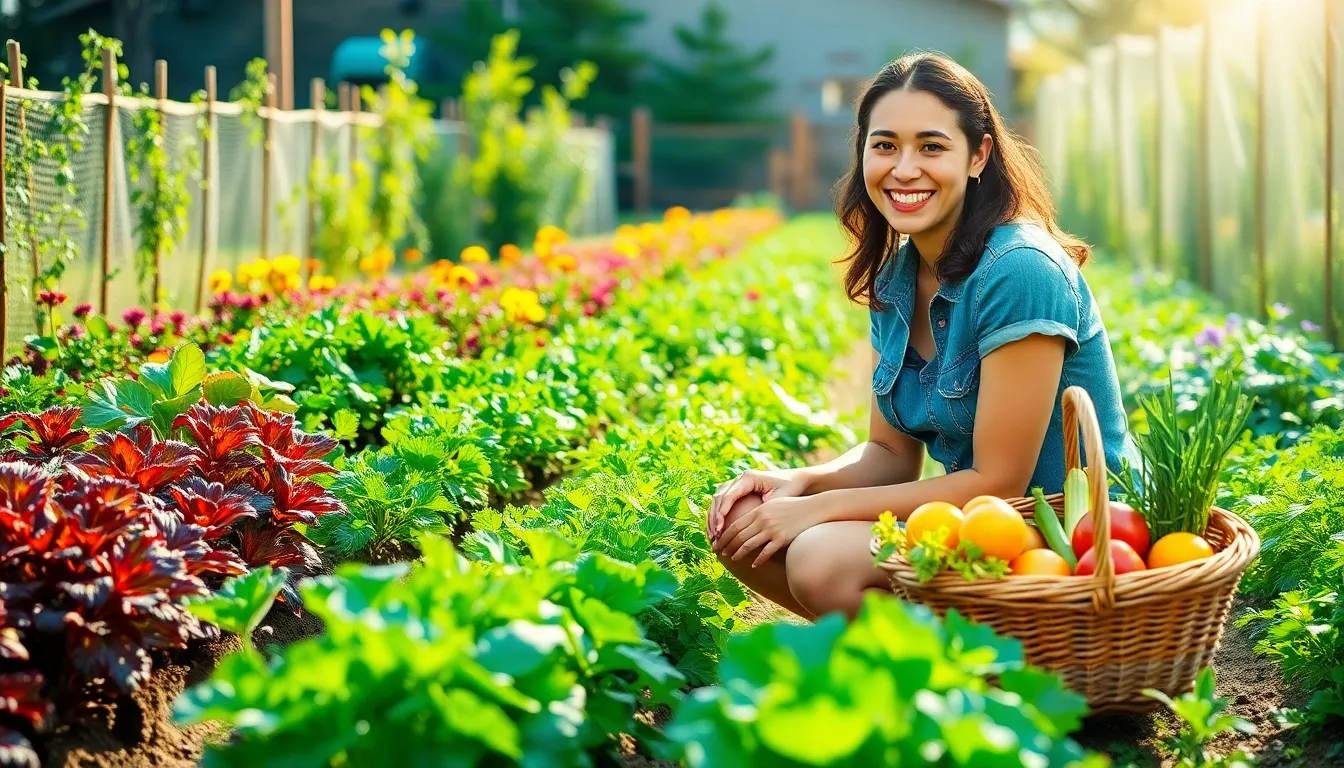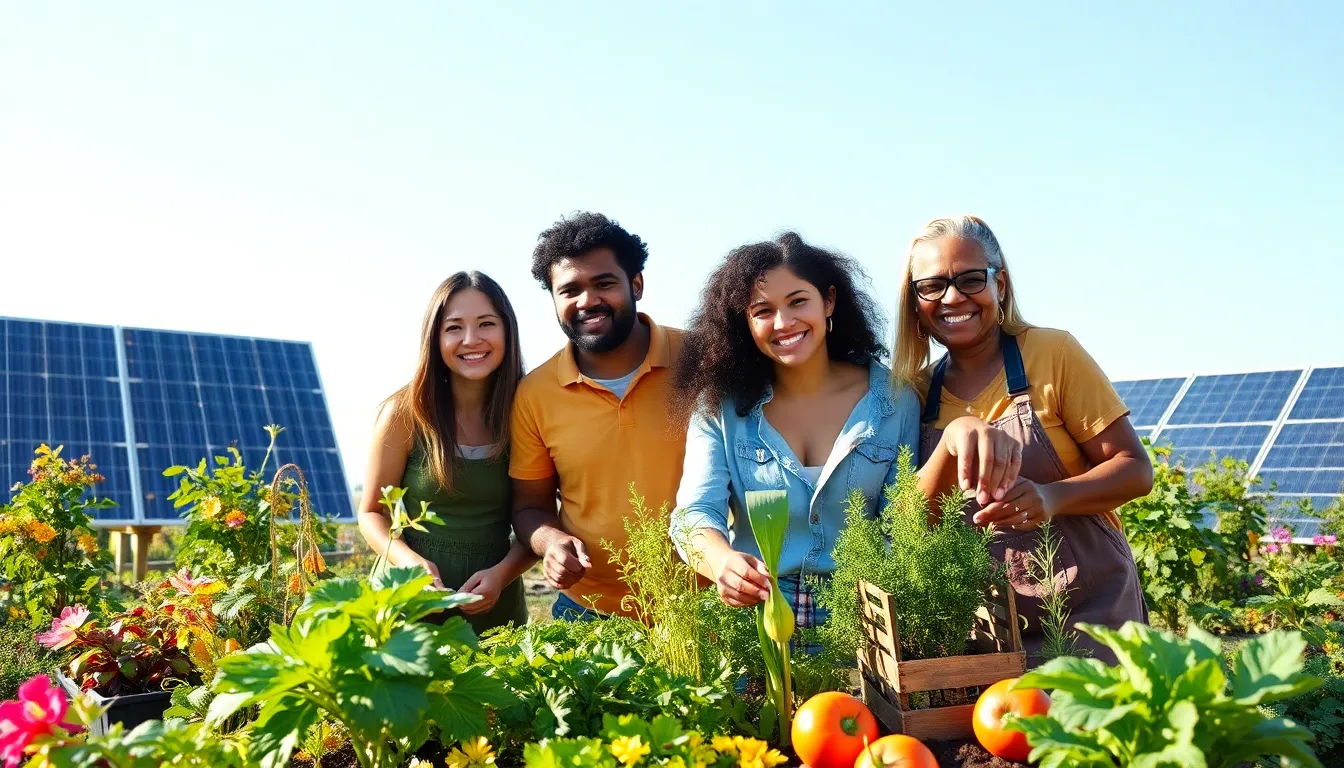Phone:
(701)814-6992
Physical address:
6296 Donnelly Plaza
Ratkeville, Bahamas.

In a world where convenience often trumps sustainability, self-sustainable living emerges as a refreshing alternative. Imagine a life where your trash becomes treasure and your backyard transforms into a mini farm. It’s not just a trend; it’s a lifestyle choice that promises a healthier planet and a happier you. Who knew growing your own veggies could be more rewarding than scrolling through endless cat videos?
Self sustainable living involves creating a lifestyle that places emphasis on self-sufficiency and environmentally friendly practices. Individuals focus on minimizing external resource dependency while maximizing the efficient use of available resources.
Growing food becomes a key component of this lifestyle. Many people transform their backyards into gardens for vegetables, fruits, and herbs, thus reducing reliance on store-bought products. Composting kitchen scraps generates nutrient-rich soil, improving garden productivity and reducing waste in landfills.
Water conservation efforts define self sustainable living. Collecting rainwater for irrigation reduces the need for municipal water, benefiting both the environment and household expenses. Additionally, using greywater from sinks and showers for landscaping minimizes water waste.
Energy efficiency plays a significant role in this approach. Incorporating renewable energy sources, such as solar panels, decreases dependence on fossil fuels, lowering carbon footprints. Installing energy-efficient appliances within the home further contributes to a more sustainable environment.
Community engagement fosters a support network. Many self-sustainable individuals participate in local farmer’s markets or trading co-ops, encouraging resource sharing and collaboration. Educating others about sustainable practices promotes wider acceptance and adoption of self-sufficient living.
These interconnected practices not only support personal well-being but also contribute positively to the planet. Adopting self sustainable living creates a lifestyle that balances needs with environmental responsibility.

Self-sustainable living offers numerous advantages that benefit both individuals and the environment. Focusing on eco-friendly practices leads to various positive changes.
One significant outcome of self-sustainable living is the reduction of carbon footprints. By growing food locally, individuals minimize transportation emissions, contributing to cleaner air. Composting kitchen scraps helps divert waste from landfills, ensuring better soil health and less pollution. Collecting rainwater for irrigation supports water conservation, which is critical in many regions. When people utilize renewable energy sources, such as solar panels, they decrease dependency on fossil fuels, promoting a cleaner energy future. Engaging in these practices fosters a deeper connection to the environment and illustrates the importance of sustainability in daily life.
Self-sustainable living can lead to considerable financial savings. Growing fresh produce in gardens reduces grocery bills, saving money over time. By producing energy through solar panels, individuals can lower utility costs, creating potential long-term savings. Participating in local trade networks allows for resource sharing, minimizing the need for cash transactions and stimulating community economies. Additionally, DIY projects often require fewer resources and can be more cost-effective than purchasing commercial products. Individuals who embrace this lifestyle frequently find more financial freedom, allowing them to allocate funds to other important areas of life.
Self-sustainable living incorporates various practices that enhance self-sufficiency and environmental stewardship. Key components include energy efficiency, water conservation, and sustainable food practices.
Energy efficiency involves utilizing renewable energy sources and optimizing consumption. Solar panels provide a notable solution, converting sunlight into electricity for home use. Many individuals choose energy-efficient appliances as well, reducing overall energy consumption. Investing in smart thermostats allows for better temperature control, leading to lower utility bills. Additionally, LED lighting systems consume less energy compared to traditional bulbs, further decreasing energy demands.
Water conservation emphasizes the importance of managing water resources wisely. Collecting rainwater in barrels for irrigation improves garden health while minimizing municipal water dependency. Greywater systems permit reusing water from sinks and showers for landscaping, thereby reducing waste. Many homeowners implement drip irrigation methods, directing water precisely to plant roots. Educating others about effective water conservation techniques fosters a community-wide commitment to sustainability.
Sustainable food practices focus on local food production and minimal environmental impact. Many individuals create backyard gardens, cultivating vegetables, fruits, and herbs while reducing reliance on grocery stores. Implementing composting methods generates nutrient-rich soil, enhancing garden productivity without chemical fertilizers. Farmers’ markets serve as valuable resources for accessing locally sourced produce, supporting local economies. Participating in community-supported agriculture programs strengthens connections between consumers and farmers, promoting food security and sustainability.
Self-sustainable living presents various challenges that require specific solutions. Addressing these obstacles can make adopting this lifestyle easier.
Many individuals face limited knowledge about sustainable practices. Access to resources, such as quality seeds or composting supplies, can also be challenging. People often struggle with time constraints, making it difficult to maintain gardens or implement projects. Additionally, some may encounter local regulations that hinder sustainable initiatives. Economic barriers can present obstacles too, as initial investments in equipment, like solar panels, may deter participation in self-sustainable living.
Educating oneself about sustainable practices helps overcome knowledge barriers. Joining local workshops or online communities facilitates resource sharing and knowledge exchange. Developing a manageable schedule allows for consistent garden maintenance without overwhelming personal time. Engaging with local governments to understand regulations can create opportunities for sustainable projects. Budgeting over time makes the transition to solar energy or other investments more feasible, encouraging long-term participation in self-sustainable living.
Embracing self-sustainable living opens doors to a more fulfilling and environmentally responsible lifestyle. It encourages individuals to take charge of their resources while fostering a deeper connection with nature. By growing food at home and reducing waste, they not only contribute to a healthier planet but also enjoy the personal rewards that come from self-sufficiency.
Engaging with local communities enhances this journey, creating networks that support sustainable practices and resource sharing. While challenges exist, the strategies outlined can empower anyone to embark on this path. Ultimately, self-sustainable living is about finding balance and making choices that benefit both personal well-being and the environment.